Like the lychee, this fruit originated in southern China. Besides which, most of its common names and its scientific name come from the Chinese language, in which long nhan means, “dragon’s eye”, alluding to the seed of the fruit, a brilliant black, marked at the base with a white eye-shaped mark on the pit, which resembles a pupil in the large eye.
The Longan is a medium-height tree that grows in abundance throughout the region. Its leaves are dark green, lanceolate, and pointed at both ends. Beginning in March, the flowers, small and of a pinkish hue, form in clusters at the end of the branches. The fruits begin to grow starting in May, and have a brown, smooth, crisp skin, and a translucent pulp with a delicate, sugary taste. The Longan is very popular in China, where it vies with the lychee, each of these two fruits having their own followers.
The taste of the Longan is better preserved in jams than that of the lychee. Moreover, the Longan, dried and without its pit, constitutes a fortifying element which stimulates, among others, intellectual functions.
In Vietnam, it is said that if the eye of the seed is applied to a snake bite, it will absorb the venom. The dried flowers are medicinal. The seeds contain a saponin and are used to wash hair.
Finally, we must not forget that the leaf of the Longan is the preferred dish of the meng da, sorte de Lethocere – Giant Water Bug, sought by the Lao to make a well-known sauce.
Comme le litchi ce fruit est originaire du Sud de la Chine. Il doit d’ailleurs la plupart de ses noms vernaculaires et son nom scientifique à la langue chinoise dans laquelle long nhan signifie « œil de dragon », allusion à la graine du fruit, noire et brillante, marquée à la base d’une tâche blanche qui rappelle un œil.
Le longanier est un arbre moyen qui pousse en abondance dans toute la région. Ses feuilles sont vertes foncé, lancéolées, pointues aux deux bouts. Les fleurs, petites et rosâtres forment des grappes en bout de branches dès le mois de mars. Les fruits qui se forment à partir du mois de mai, ont une écorce brune, fine, craquante, et une pulpe translucide sucrée au goût très fin. Le longane est très populaire en Chine où il rivalise avec le litchi, chacun des deux fruits ayant ses adeptes. Le goût du longane serait mieux préservé dans les conserves que celui du litchi. En outre le longane débarrassé de son noyau et desséché constitue un élément tonique qui exciterait, entre autres, les fonctions intellectuelles.
Au Vietnam on raconte que l’œil de la graine appliqué sur la morsure d’un serpent aurait la propriété d’absorber le venin.
Les fleurs séchées sont médicinales. Les graines contiennent une saponaire et sont utilisées pour laver les cheveux.
Enfin n’oublions pas que la feuille du longanier est le plat préféré des meng da, sorte de léthocère – Punaise d’eau géante, recherché par les Lao pour en faire une sauce très réputée.
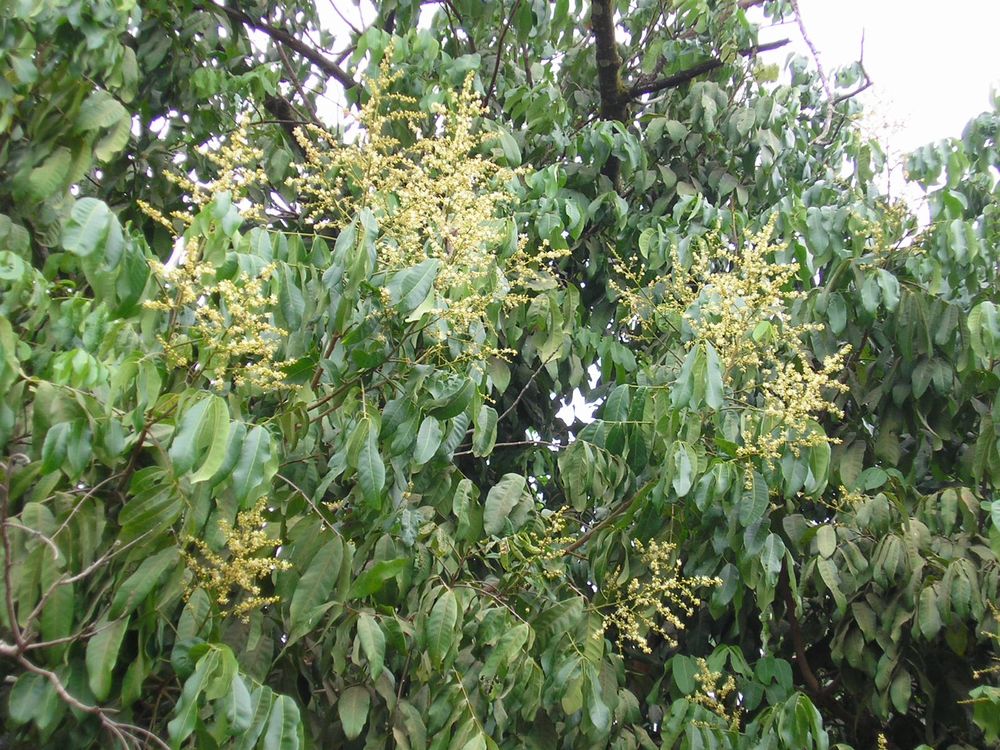
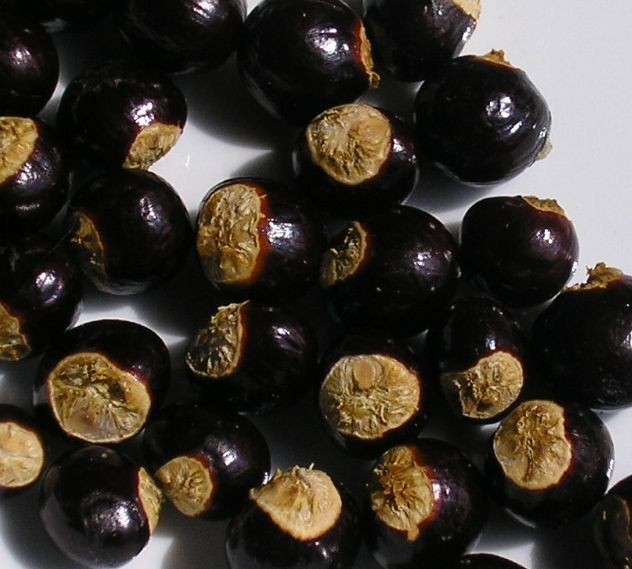
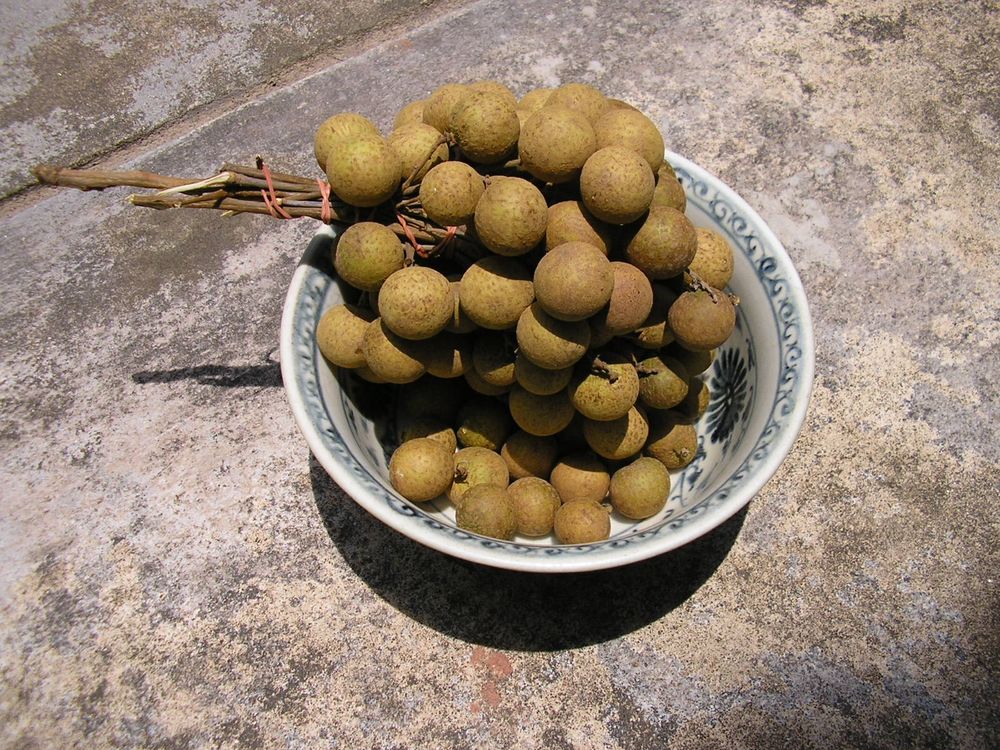
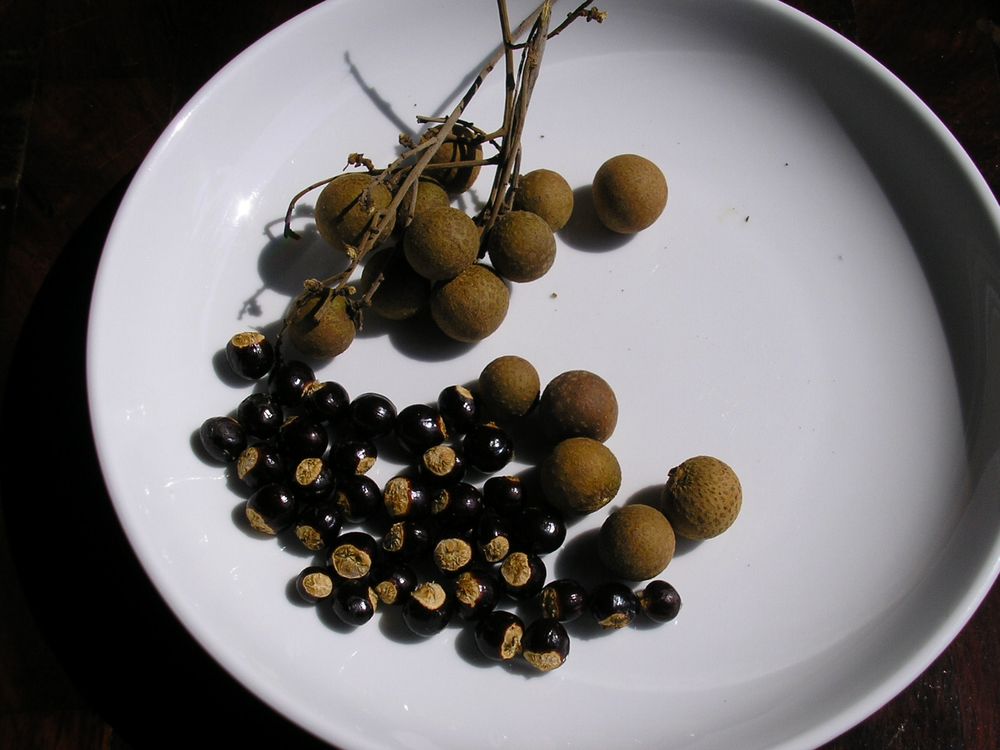
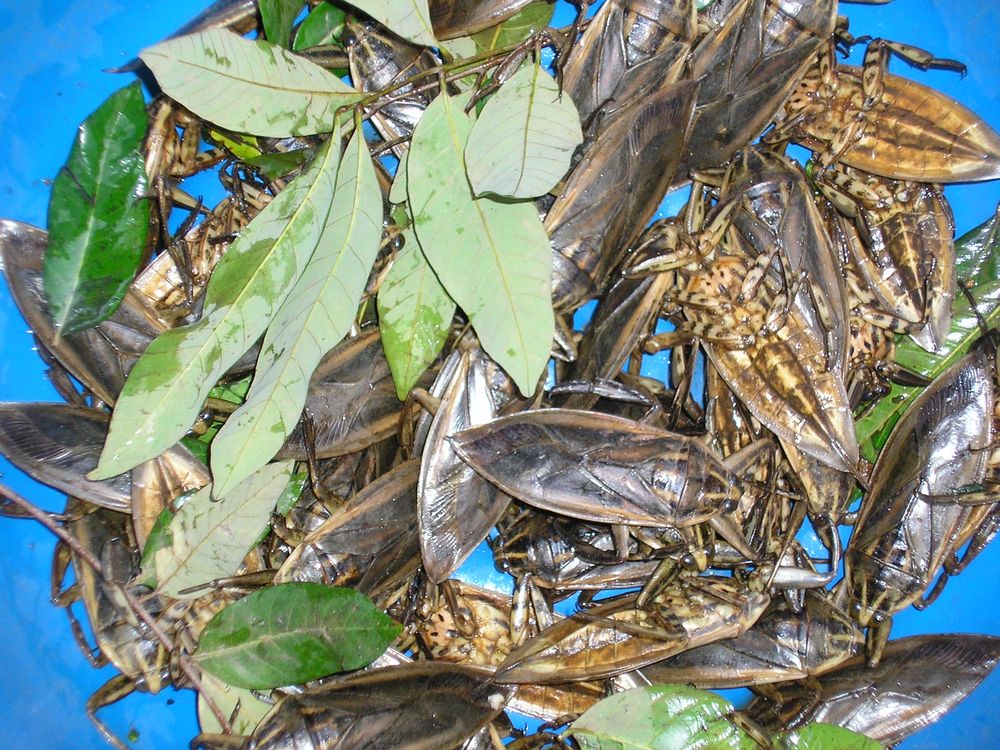
Like the lychee, this fruit originated in southern China. Besides which, most of its common names and its scientific name come from the Chinese language, in which long nhan means, “dragon’s eye”, alluding to the seed of the fruit, a brilliant black, marked at the base with a white eye-shaped mark on the pit, which resembles a pupil in the large eye.
The Longan is a medium-height tree that grows in abundance throughout the region. Its leaves are dark green, lanceolate, and pointed at both ends. Beginning in March, the flowers, small and of a pinkish hue, form in clusters at the end of the branches. The fruits begin to grow starting in May, and have a brown, smooth, crisp skin, and a translucent pulp with a delicate, sugary taste. The Longan is very popular in China, where it vies with the lychee, each of these two fruits having their own followers.
The taste of the Longan is better preserved in jams than that of the lychee. Moreover, the Longan, dried and without its pit, constitutes a fortifying element which stimulates, among others, intellectual functions.
In Vietnam, it is said that if the eye of the seed is applied to a snake bite, it will absorb the venom. The dried flowers are medicinal. The seeds contain a saponin and are used to wash hair.
Finally, we must not forget that the leaf of the Longan is the preferred dish of the meng da, sorte de Lethocere – Giant Water Bug, sought by the Lao to make a well-known sauce.
Comme le litchi ce fruit est originaire du Sud de la Chine. Il doit d’ailleurs la plupart de ses noms vernaculaires et son nom scientifique à la langue chinoise dans laquelle long nhan signifie « œil de dragon », allusion à la graine du fruit, noire et brillante, marquée à la base d’une tâche blanche qui rappelle un œil.
Le longanier est un arbre moyen qui pousse en abondance dans toute la région. Ses feuilles sont vertes foncé, lancéolées, pointues aux deux bouts. Les fleurs, petites et rosâtres forment des grappes en bout de branches dès le mois de mars. Les fruits qui se forment à partir du mois de mai, ont une écorce brune, fine, craquante, et une pulpe translucide sucrée au goût très fin. Le longane est très populaire en Chine où il rivalise avec le litchi, chacun des deux fruits ayant ses adeptes. Le goût du longane serait mieux préservé dans les conserves que celui du litchi. En outre le longane débarrassé de son noyau et desséché constitue un élément tonique qui exciterait, entre autres, les fonctions intellectuelles.
Au Vietnam on raconte que l’œil de la graine appliqué sur la morsure d’un serpent aurait la propriété d’absorber le venin.
Les fleurs séchées sont médicinales. Les graines contiennent une saponaire et sont utilisées pour laver les cheveux.
Enfin n’oublions pas que la feuille du longanier est le plat préféré des meng da, sorte de léthocère – Punaise d’eau géante, recherché par les Lao pour en faire une sauce très réputée.










Like the lychee, this fruit originated in southern China. Besides which, most of its common names and its scientific name come from the Chinese language, in which long nhan means, “dragon’s eye”, alluding to the seed of the fruit, a brilliant black, marked at the base with a white eye-shaped mark on the pit, which resembles a pupil in the large eye.
The Longan is a medium-height tree that grows in abundance throughout the region. Its leaves are dark green, lanceolate, and pointed at both ends. Beginning in March, the flowers, small and of a pinkish hue, form in clusters at the end of the branches. The fruits begin to grow starting in May, and have a brown, smooth, crisp skin, and a translucent pulp with a delicate, sugary taste. The Longan is very popular in China, where it vies with the lychee, each of these two fruits having their own followers.
The taste of the Longan is better preserved in jams than that of the lychee. Moreover, the Longan, dried and without its pit, constitutes a fortifying element which stimulates, among others, intellectual functions.
In Vietnam, it is said that if the eye of the seed is applied to a snake bite, it will absorb the venom. The dried flowers are medicinal. The seeds contain a saponin and are used to wash hair.
Finally, we must not forget that the leaf of the Longan is the preferred dish of the meng da, sorte de Lethocere – Giant Water Bug, sought by the Lao to make a well-known sauce.
Comme le litchi ce fruit est originaire du Sud de la Chine. Il doit d’ailleurs la plupart de ses noms vernaculaires et son nom scientifique à la langue chinoise dans laquelle long nhan signifie « œil de dragon », allusion à la graine du fruit, noire et brillante, marquée à la base d’une tâche blanche qui rappelle un œil.
Le longanier est un arbre moyen qui pousse en abondance dans toute la région. Ses feuilles sont vertes foncé, lancéolées, pointues aux deux bouts. Les fleurs, petites et rosâtres forment des grappes en bout de branches dès le mois de mars. Les fruits qui se forment à partir du mois de mai, ont une écorce brune, fine, craquante, et une pulpe translucide sucrée au goût très fin. Le longane est très populaire en Chine où il rivalise avec le litchi, chacun des deux fruits ayant ses adeptes. Le goût du longane serait mieux préservé dans les conserves que celui du litchi. En outre le longane débarrassé de son noyau et desséché constitue un élément tonique qui exciterait, entre autres, les fonctions intellectuelles.
Au Vietnam on raconte que l’œil de la graine appliqué sur la morsure d’un serpent aurait la propriété d’absorber le venin.
Les fleurs séchées sont médicinales. Les graines contiennent une saponaire et sont utilisées pour laver les cheveux.
Enfin n’oublions pas que la feuille du longanier est le plat préféré des meng da, sorte de léthocère – Punaise d’eau géante, recherché par les Lao pour en faire une sauce très réputée.


